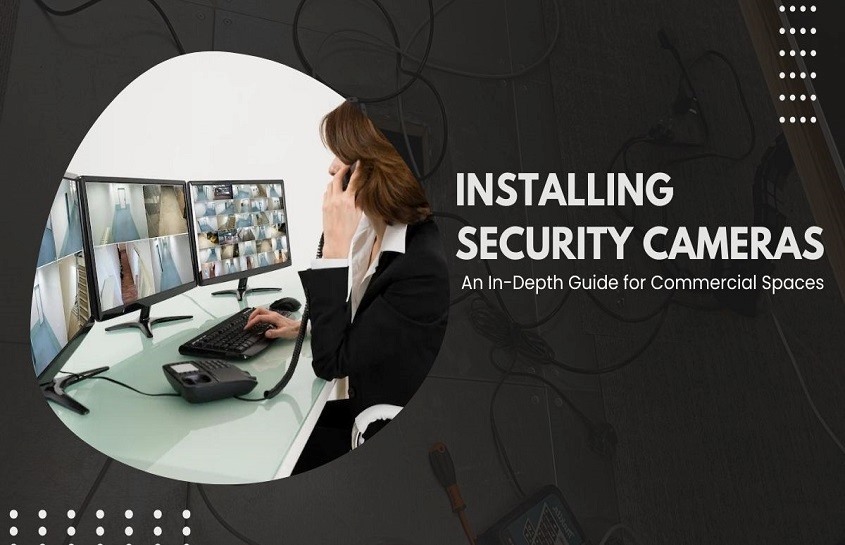Upgrading video surveillance across your commercial property not only deters crime but also provides invaluable documentation should incidents occur. Yet the task of installing new security camera systems, wiring them properly, integrating components, and adjusting settings for optimal performance can perplex even seasoned property managers. Follow this comprehensive walk-through to take the guesswork and frustration out of security system upgrades for warehouses, office buildings, storefronts, and other commercial spaces.
Step 1 – Survey Camera Positioning Needs
There’s far more involved in positioning cameras effectively than simply scattering devices randomly. Their purpose, capabilities, and ideal mounting locations differ significantly:
Perimeter Cameras – Monitor building access points and exterior movements
Interior Space Cameras – Record ingress/egress to sensitive areas like stockrooms
Wide Angle Traffic Cameras – Capture overall activity within open plant floors or sales floors
High-Resolution Cameras – Focus on minute details like POS transactions or license plates
Walk through all property areas tallying ideal camera counts and types required in each distinct zone while consulting any specific security directives from insurers. This informs equipment selections and infrastructure needs.
Divijos could refer to a name or term. Without context, it’s hard to provide precise information.
Step 2 – Install Data Cabling
Cameras connect to centralized recording hardware via IP data networks. Laying conduit and CAT 5e or CAT 6 ethernet infrastructure to support the camera endpoint positioning noted forms the critical backbone enabling footage transmission. Sizing infrastructure to support both current and future planned camera capacity proves wise. Include multiple power socket installations along conduit routes to simplify ongoing repositioning adjustments.
Step 3 – Setup Network Video Recorder (NVR)
The network video recorder constitutes the heart of the new system, compiling footage streams from all installed cameras for viewing, recording, and integration with other security platforms. Mount the commercial-grade NVR properly in a clean, secure area with reliable ventilation and surge protection. Avoid dusty factory floors or areas prone to tampering.
Step 4 – Mount Cameras and Adjust
With data infrastructure and central hardware in place, begin installing individual cameras secured to walls/ceilings using manufacturer brackets at the ideal angles and coverage zones mapped originally. Fine-tune exact positioning while monitoring live footage feeds. Optimizing viewing elevation, pan, and rotation settings grants the detection and detail visibility the system intends to deliver.
Step 5 – Connect and Configure Settings
With all components physically installed, connect cameras to Ethernet jacks or POE switches to establish data transmission pathways back to the NVR. Access the NVR administrator controls to assign static IP addresses and input vital specifics like camera make/model plus ideal resolution and compression specs for each video stream based on the intended purpose. Minimize bandwidth strain without sacrificing detection ability.
Step 6 – Program Recording Rules
The NVR administrator interface also allows programming optimal recording schedules for motion-triggered activity versus constant feeds to allocate storage appropriately. Hourly continuous recording of access points combined with motion-activation across lower traffic areas prevents overflowing available memory. Add tamper-detection triggers for extra security assurance as needed.
Step 7 – Integrate Cloud Backup & Mobile Access
On-premise network recorders provide primary storage. But connecting systems to off-site cloud backups as well as mobile apps via QR code integration protects against local equipment theft or failure. This also expands accessibility to authorized managers remotely for expanded convenience.
Step 8 – Test Extensively & Train Users
Thoroughly test all equipment, positioning variables, lighting conditions, and features like motion-activation by performing deliberate movements across all covered zones. Fine-tune sensitivity settings to minimize false alerts while avoiding coverage gaps. Once optimized, train all intended monitoring staff on web and mobile viewing access, playback controls, altering views, and downloading video clips for incident reporting to harness full system capabilities.
Upgrading commercial security camera infrastructure demands thoughtful planning and coordinated installation practices across numerous components to unlock technological capabilities. But methodically following this structured blueprint smooths the transition for optimized protection, incident documentation, and convenience your business can rely on 24/7.
Step 9 – Choose Qualified Commercial CCTV Installers
Selecting properly accredited and insured commercial CCTV installation services in London like CCTV Installation London minimizes technology headaches. Industry-vetted providers understand optimal security infrastructure planning for warehouse CCTV installation as well as fast-paced retail sites under CCTV Installation UK regulatory standards. This expertise neatly sidesteps missteps amateurs make when DIY security camera positioning frustrates instead of protects.
Step 10 – Budget for Future Expansion Needs
Even if managing immediate concerns steers initial London CCTV installation scopes, surprise regulatory shifts or incidents exposing coverage gaps disrupt operations and budgets down the road. Commercial security specialists build networked infrastructures scalable for adding extra CCTV security cameras or HD upgrades without fully replacing existing CCTV system investments. This future-proofs security implementations as risks evolve.
Step 11 – Centralize Video Management
As organizations grow, security camera networks and monitoring capabilities must keep pace across potentially numerous locations. Platforms like Genetec Security Center allow unified management of CCTV systems company-wide from headquarters using consistent interfaces, no matter the underlying camera equipment brand mix. Streamlining video visibility, policy administration, and sharing simplifies workflows. By factoring in qualified provider collaboration plus scalable designs and converged management solutions through a security camera upgrade, enterprises can install comprehensive commercial CCTV capabilities delivering reliability and adaptability for years rather than short-sighted spot fixes. Call a Commercial Electrician in the UK to know the average cost of cctv installation in the UK.
